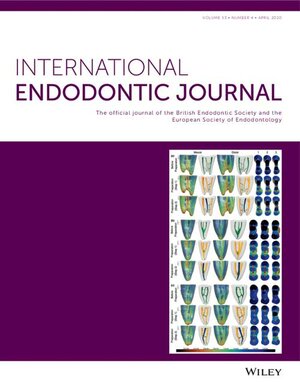Effects of apical periodontitis treatment on hyperglycaemia in diabetes: A prospective cohort study
Abstract
Aim
This prospective cohort study was undertaken to evaluate the success rate of root canal treatment (RCT) in type 2 diabetes mellitus (T2DM) patients with targeted level and unachieved targeted level of glycaemic control as well as the impact of RCT on the glucose blood level in T2DM patients.
Methodology
Patients needing RCT were divided into three groups: these without T2DM, that is, the control group (CG), those with targeted level of glycated haemoglobin HbA1c < 7% (TL A1c) and the third ones with unachieved targeted level (UTL A1c), that is, with HbA1c ≥ 7%. Before RCT, HbA1c and the periapical index (PAI) score were assessed, as well as 1 year later.
Results
Our results showed less favourable treatment results of RCT such as a reduction of radiographic lesions in T2DM patients, particularly in subjects with UTL A1c. The intergroup analysis of PAI score at the 12-month follow-up revealed a significant difference in TL A1C (p = .022) and CG (p = .001) with respect to UTL A1c. Total number of healed teeth (PAI≤2) at the 12-month after RCT in UTL A1c was significantly lower in comparison to CG (p = .008). Contrariwise, RCT may improve the glycaemic control in diabetic patients with UTL A1c after 12 months of posttreatment. Regression analysis showed that UTL A1c patients were more likely to have AP persistence after endodontic treatment (OR = 4.788; CI: 1.157–19.816; p = .031).
Conclusions
T2DM retards the AP healing and conversely AP contributes to increasing the inflammatory burden in T2DM. RCT reduces the cumulative inflammatory burden in T2DM and thus may contribute to improvement of glycaemic control particularly in patients with UTL A1c.

 求助内容:
求助内容: 应助结果提醒方式:
应助结果提醒方式:


